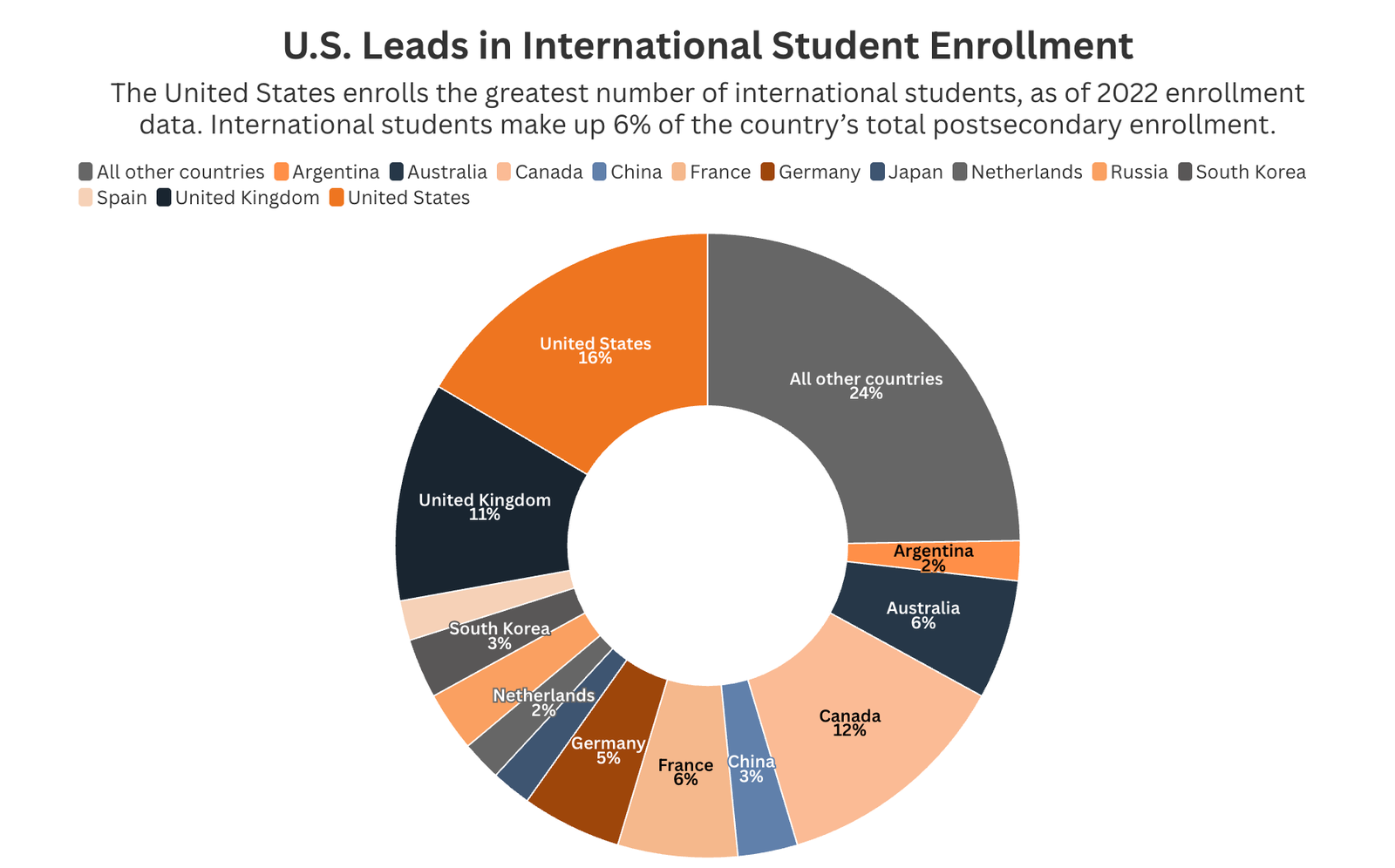For months now, the current administration has targeted universities, particularly so-called “elite” institutions. A focus among the many attacks on these elite universities has been the size of their international student populations. Based on all the attention aimed at these schools, one would think the US had no other colleges or universities except for these few. Let’s set the record straight.
First, the United States offers a world-class education to both American and international students, with the largest higher education capacity in the world. US students have thousands of institutions to choose from, including community colleges, state universities, and public and private institutions of every size and price point. Many advisors recommend students apply to between five and 12 schools, advising students to consider factors such as fit, admission odds, and affordability. We are not a one-size-fits-all system, and no other country matches this diversity of choice.
When this context is understood regarding the size of the US higher education system, it leads to the realization that the claim of international students taking seats away from US domestic students is simply false. The US currently operates well below our actual capacity.
As the chart below shows, the US leads in international student numbers, but when digging a bit deeper there are some big differences compared to other countries. In the US, there are more than 7,200 SEVIS-certified schools that can accept international students. In Canada, 223 schools are certified to enroll international students; in the UK, the number is 296. Of the 19M students studying in the US, only 6% are international. Proportionally, our competitors host far more international students, and in several cases are outperforming us in attracting global talent.

Project Atlas, 2024; *UNESCO, 2024 Other countries section includes Chile, Denmark, Hungary, Israel, Italy, Mexico, New Zealand, Norway, the Philippines, Poland, and Sweden.
Furthermore, there is strong evidence supporting significant benefits for American students from international student enrollments. According to the National Foundation for American Policy (NFAP):
For each additional international undergraduate student at a public university, in-state freshman enrollment increases by two, on average. Every 10 additional bachelor’s degrees awarded to international students are associated with 15 more STEM degrees awarded to domestic students. In STEM PhD programs, every additional international graduate is associated with an additional domestic graduate. Across all fields, 10 more international graduate students translate into three more domestic graduate students.
International students don’t just coexist with US students, they expand opportunities. They often pay full tuition, without access to federal aid or loans, subsidizing education for Americans.
If the administration’s goal is truly “America First,” the question becomes: Is it America first, or Americans first? The numbers show that when international students enroll, Americans win.

